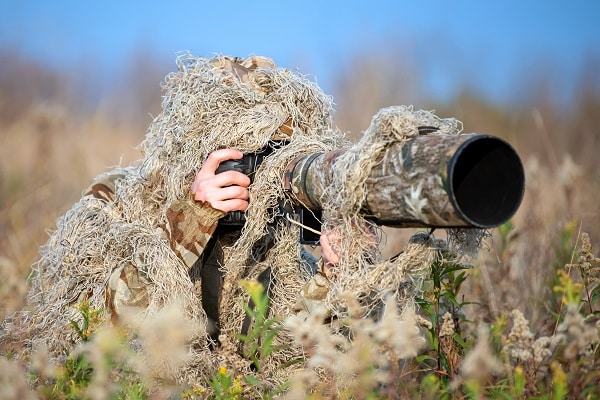If you’re an aspiring photographer looking to capture the beauty and majesty of wildlife, then consider starting your journey with wildlife photography. This type of photography is captivating and rewarding in many ways, from seeing animals in their natural habitat to finding amazing shots that can be shared with family and friends. Although it requires more skill than a regular point-and-shoot camera, taking pictures of wild creatures can be easy once you have the proper knowledge. Here are some tips for starting your path toward successful wildlife photography.
Contents
- 1 The Growing Passion For Wildlife Photography
- 2 Tips For Starting With Wildlife Photography
- 3 Research Your Subject
- 4 Invest In Quality Gear
- 5 Practice Patience
- 6 Use The Right Settings
- 7 Respect The Animals
- 8 Be Prepared For The Environment
- 9 Practice
- 10 Let These Tips Guide You Into The World Of Wildlife Photography!
The Growing Passion For Wildlife Photography
Wildlife photography is becoming increasingly popular as both professional and amateur shutterbugs feel inspired to capture the raw beauty of nature. Often, the subtle details of a creature’s behavior or environment speak loudly through a single image. The challenge of obtaining that ideal shot is well worth the effort, with photographers often having to patiently wait hours or days for an animal to present itself in the perfect moment of its life.
Wildlife photographers must also be prepared for anything during their natural excursions, from unforeseen weather conditions and natural disasters to chance sightings of rare creatures. Although it requires an exceptional amount of dedication and determination, few photographic endeavors are more rewarding than capturing a beautiful moment on film that can be shared with the world forever.
Tips For Starting With Wildlife Photography
Now that you’re inspired to start your wildlife photography journey, here are some tips for getting the most out of your experience:
Research Your Subject

Researching your subject before beginning wildlife photography can be incredibly helpful. Learning about the animals you plan to photograph – such as their behavior, habitats, and preferred lighting conditions – can help you anticipate their movements and be in the right place at the right time.
Collecting this information before venturing out into the field will also ensure that you’re as safe and respectful to animals as possible, leading to better photos that capture the beauty of wildlife in its natural setting. By dedicating yourself to learning more about your subject, you’ll ultimately create unique photographs with stories all their own.
Invest In Quality Gear

Wildlife photography requires higher-end gear than solely using your smartphone or a basic point-and-shoot camera. Investing in equipment like a DSLR camera and a good quality lens is essential for taking sharp, clear, and vibrant pictures of wildlife. A telephoto lens will be beneficial for capturing close-up shots of animals that are far away or shy away from human presence.
Experienced photographers suggest avoiding overspending on sports lenses as they may demand more expertise than needed and weigh more, making them difficult to transport in the wild. Researching before investing in gear can ensure you get quality equipment that helps you develop your skills and create stunning images.
Practice Patience

Patience should be your best friend if you want to get into wildlife photography. You’ll need it to wait for the perfect moment of capture before shooting. Wildlife photography is about being mindful of an animal’s movements and tracking its environment for behavior changes. It involves waiting long hours in a particular area until the scene is just right before taking a shot.
Being patient will help you observe and recognize the necessary elements that provide an interesting or captivating composition and capture behavior patterns that add to the photo’s uniqueness. With practice and patience, your shots will start to reflect their natural beauty and provide memorable images worth appreciating and sharing with others!
Use The Right Settings

If you are just starting to get into wildlife photography, setting up your camera correctly is essential. Start by selecting the right ISO and adjust your aperture or shutter speed accordingly. Depending on how much light is available in your environment, as well as the movement of the subject, you will want to determine which of these three settings works best for getting great shots.
Learning how to use both autofocus and manual focus modes is also essential. Autofocus can be especially helpful when shooting fast-moving subjects, while manual focus can help you achieve sharp images of stationary subjects over a long distance. Knowing when to use these features will provide the clearest images of your animal subjects.
Respect The Animals

Respect is a key point for anyone interested in wildlife photography. It’s essential to never disturb the animals you photograph; remember that disturbing them will alter their behavior and significantly decrease the chances of you getting an interesting shot. Move slowly and always leave enough space between you and the animal – this will help ensure your safety off-camera and never get too close to their personal space.
Additionally, it’s very important to never feed or touch the animals as they may become dependent on humans and not natural food sources. Wildlife photography can be fun and rewarding but remember to always respect the amazing animals you’re lucky to capture.
Be Prepared For The Environment

Wildlife photography can be an immensely rewarding pursuit, but it needs to be taken seriously and approached with the proper preparations. Knowing what to bring before you go out into the wild is key. Ensure you are armed with suitable clothing and gear for the environment you will be photographing in. For destinations near water, invest in a waterproof jacket and pants.
Similarly, having insect repellent on hand is always a good idea when photographing nature. Understanding your environment and coming prepared for it can mean the difference between a successful and unsuccessful shoot, so do your research ahead of time!
Practice

Whether you are an experienced photographer or just starting to explore the world of wildlife photography, one key tip will bring results – practice. Dedicating time to understanding your camera and trying different settings and techniques will allow you to gain knowledge and develop new skills.
Taking a shot and instantly reviewing it gives invaluable feedback to help identify successes and failures. It can be tempting to skip the basics when looking for spectacular shots, but mastering them first is essential for creating stunning images. As with any skill, always remember that practice makes perfect: the more you shoot, the better your shots will become!
Let These Tips Guide You Into The World Of Wildlife Photography!
In conclusion, wildlife photography can be an incredibly rewarding activity that leads to unique and stunning images. By following these tips, you can start your journey into this amazing hobby – from selecting the right settings to respecting the animals and being prepared for any environment, you find yourself in. With dedication and practice, you will soon have beautiful photographs of wild creatures worth cherishing for years.


